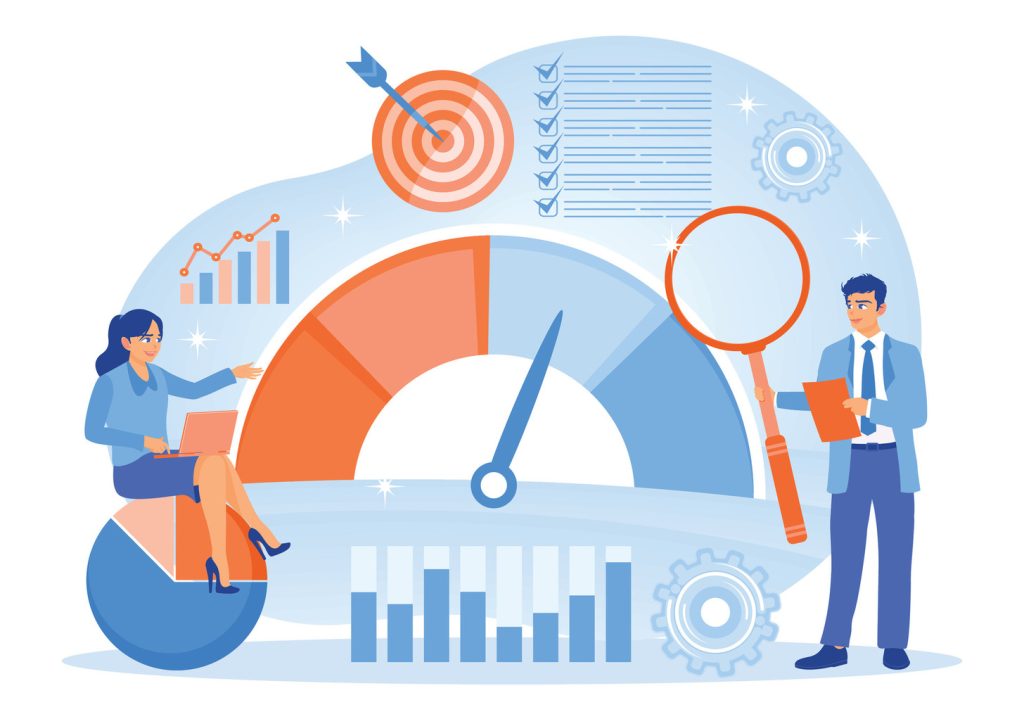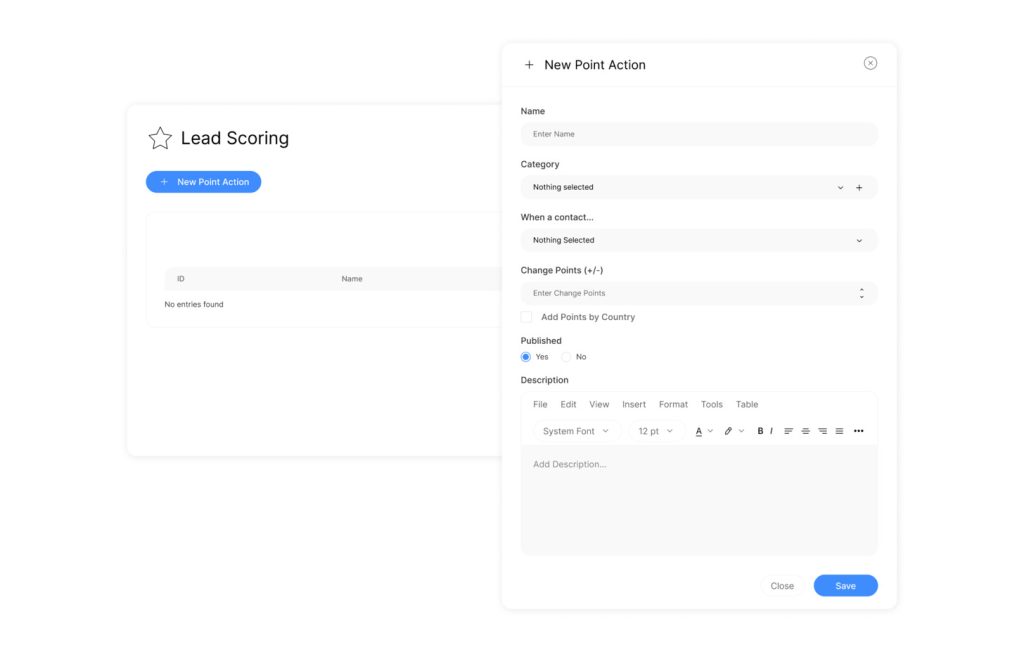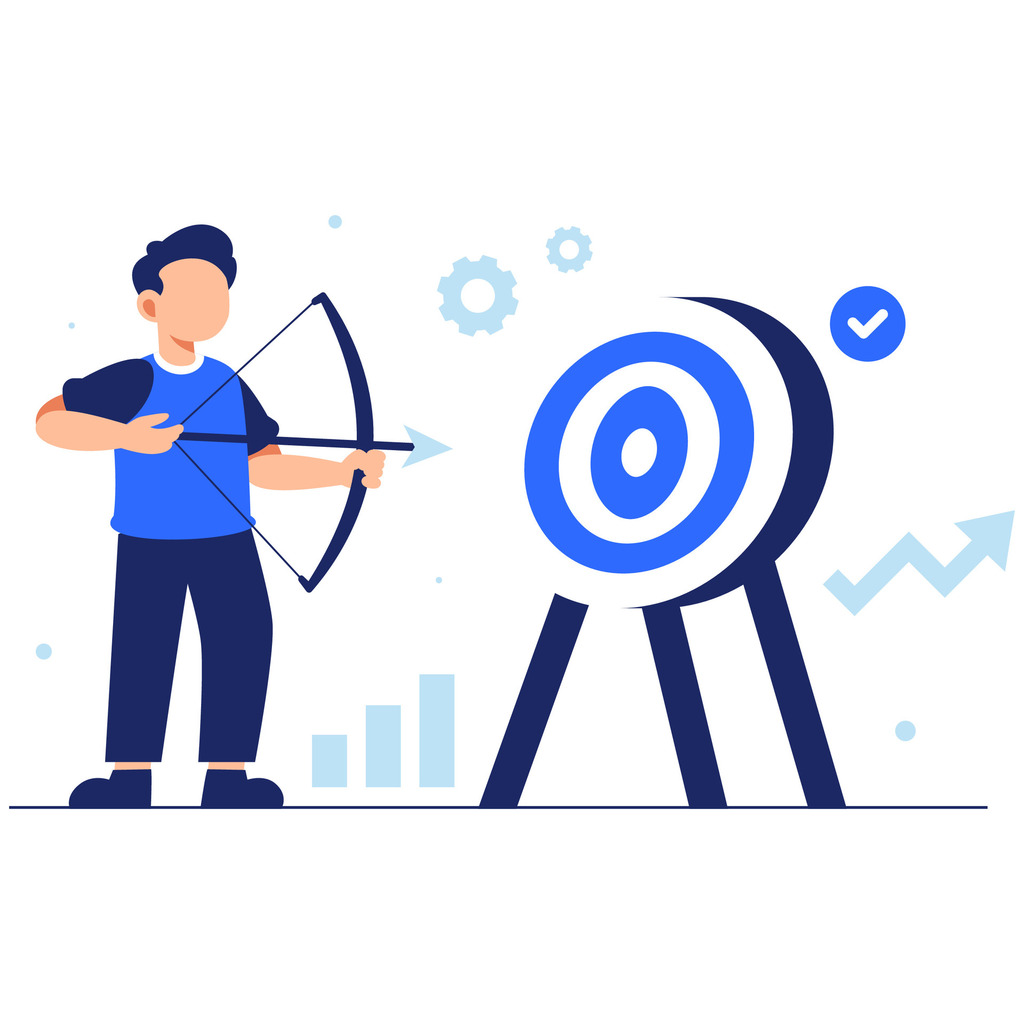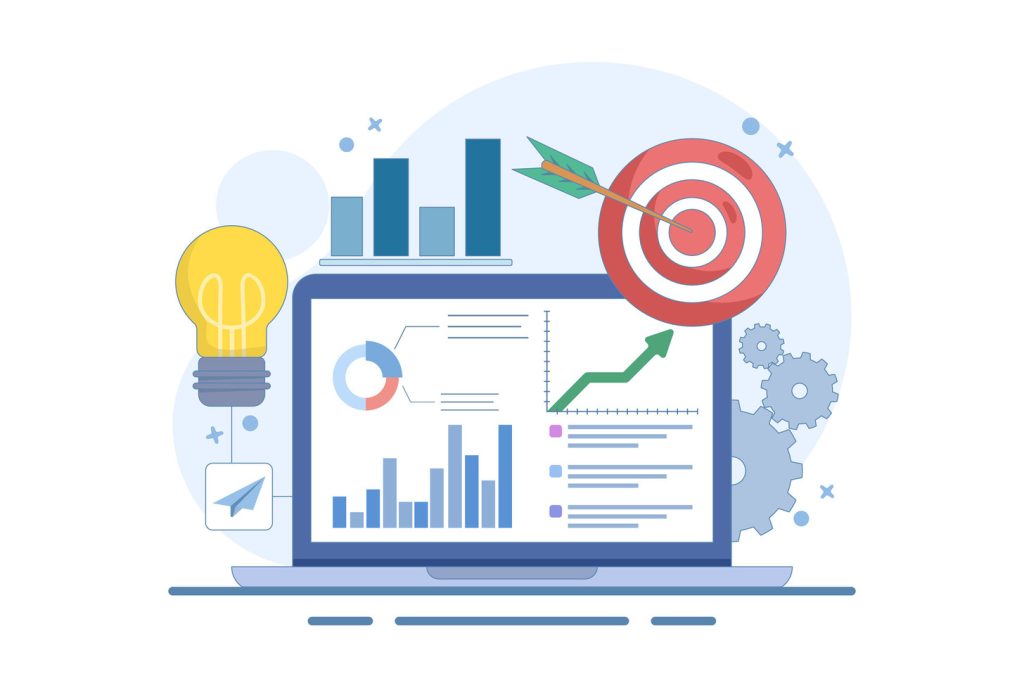Effective Lead Scoring Mechanisms for Business Success

Modern businesses face a critical challenge: identifying which prospects deserve immediate attention by leveraging advanced scoring mechanisms. With marketing teams generating hundreds of potential customers, sales professionals need strategies to cut through the noise. Prioritizing high-quality opportunities isn’t just helpful—it’s essential for growth.
A structured approach to evaluating prospects transforms chaotic pipelines into actionable roadmaps. By analyzing behaviors like website engagement or content downloads, teams gain clarity on who’s ready to buy. This method eliminates wasted effort on contacts unlikely to convert, freeing resources for high-potential targets.
Alignment between departments improves dramatically when both marketing and sales teams agree on what defines a ready-to-buy prospect. Shared criteria create smoother handoffs and foster collaboration. The result? Faster deal closures and predictable revenue streams.
Companies adopting systematic prioritization see measurable reductions in acquisition costs. Instead of chasing every possibility, reps focus energy where it matters most. Data-driven decisions replace guesswork, creating repeatable processes that scale with business expansion.
Key Takeaways
- Prioritizing prospects boosts sales efficiency and shortens conversion cycles
- Behavior-based evaluation identifies ready-to-buy targets with precision
- Cross-department alignment ensures seamless prospect handoffs
- Systematic approaches reduce customer acquisition costs by up to 30%
- Data-driven strategies make revenue growth predictable and scalable
Introduction to Lead Scoring
With customer data volumes doubling every three years, businesses need systematic ways to separate promising opportunities from dead ends. Lead scoring solves this by ranking prospects using measurable actions and traits. This method turns chaotic information into clear priorities, helping teams focus on what truly drives growth.
Overview of Lead Scoring Concepts
Effective prospect evaluation relies on quantifiable metrics like website visits, email opens, and job titles. These factors create a points system that predicts conversion likelihood. For example, a C-level executive downloading a pricing sheet might score higher than a junior employee viewing a blog post.
| Criteria | Traditional Approach | Modern Lead Scoring |
|---|---|---|
| Basis | Gut feeling | Behavioral + demographic data |
| Scalability | Limited to small teams | Works for 10 or 10,000 prospects |
| Team Alignment | Conflicting priorities | Shared sales/marketing rules |
Why Lead Scoring Matters Today
Manual qualification crumbles under today’s data deluge. A 2023 Salesforce study found companies using scoring models close deals 47% faster than those relying on intuition. Marketing teams also benefit by seeing which campaigns produce qualified leads versus empty clicks.
Alignment between departments improves when both sides agree on what makes a “hot” prospect. Shared rules prevent missed opportunities and reduce acquisition costs by up to 19% according to HubSpot benchmarks.
What is Lead Scoring and Its Benefits?

Businesses drowning in unqualified contacts need a smarter way to separate potential buyers from window shoppers. Lead scoring acts as a precision filter, ranking prospects using data-driven insights about their behavior and characteristics.
Defining Lead Scoring
This method evaluates interactions like email clicks, webinar attendance, and content downloads. Each action earns points, creating a clear hierarchy of buyer readiness. Marketing teams nurture low-scoring contacts, while high-potential opportunities get fast-tracked to sales teams.
Example: A CFO downloading a case study scores higher than an intern viewing a blog. The system automatically flags the CFO for immediate follow-up, ensuring timely engagement.
Scoring Mechanisms: Key Advantages for Sales and Marketing Teams
Sales professionals waste 50% less time chasing dead ends when using scoring models. They focus exclusively on contacts showing genuine purchase signals—like repeated pricing page visits or demo requests.
Marketing departments gain clarity on campaign effectiveness. Teams double down on strategies that generate high-value prospects, boosting ROI by 22% according to recent industry reports.
Customers benefit from relevant interactions timed to their needs. A scored lead receives tailored messaging instead of generic pitches, increasing conversion odds by 34%.
| Metric | Without Scoring | With Scoring |
|---|---|---|
| Sales Cycle Length | 62 days | 41 days |
| Cost per Acquisition | $189 | $127 |
| Cross-Team Alignment | Low | High |
The Importance of Lead Scoring Mechanisms in Modern Sales and Marketing
Sales teams face mounting pressure as markets tighten. The Salesforce State of Sales Report reveals 53% of sales professionals struggle more to close deals than last year. Higher interest rates and budget cuts stretch sales cycles, making every potential buyer critical to revenue goals.
Organizations without prioritization systems risk losing high-value opportunities. Competitors using data-driven methods can identify and engage ready buyers faster. This urgency makes systematic prospect evaluation essential—not optional—for survival in competitive markets.
| Factor | Without Scoring | With Scoring |
|---|---|---|
| Deal Closure Rate | 27% | 42% |
| Response Time | 48 hours | 2.7 hours |
| Competitive Loss Rate | 38% | 12% |
Marketing departments gain equal benefits. They can focus resources on campaigns that attract decision-makers rather than casual browsers. This alignment ensures sales teams receive qualified prospects instead of unvetted contacts.
Companies delaying implementation face two risks: wasted resources on low-potential leads and slower response times for leads likely to convert into paying customers, which hurts overall lead generation efforts. Adopting a scoring model turns these challenges into measurable advantages, creating a repeatable process for sustainable growth.
Lead Scoring Mechanisms: Best Scoring Mechanisms Models for Business Growth

Organizations now have multiple strategic options to systematically assess and prioritize potential clients. These frameworks transform raw data into actionable insights, helping teams focus on prospects most likely to drive revenue. From traditional demographic filters to AI-powered predictions, each approach offers unique advantages for specific business needs.
Understanding Different Scoring Mechanisms and Models
Five core methodologies dominate modern prospect evaluation systems. Firmographic models analyze organizational attributes like industry verticals, company size, and annual revenue—ideal for B2B companies focusing on lead generation and identifying their ideal customers.
A SaaS provider might prioritize CFOs at firms with 500+ employees, while ignoring startups below $1M in funding.
Behavioral tracking identifies hot prospects through digital footprints. Repeated visits to pricing pages or whitepaper downloads often signal purchase readiness. One study found companies using engagement-based systems respond 83% faster to high-intent buyers than competitors.
| Model Type | Key Focus | Best For |
|---|---|---|
| Predictive | AI pattern recognition | Scalable operations |
| Purchase Intent | Market research activity | Short sales cycles |
| Negative | Disqualification signals | Resource optimization |
Emerging approaches like predictive lead scoring leverage machine learning to refine accuracy continuously. These systems automatically adjust weightings based on historical conversion patterns. “Companies using predictive models see 31% higher win rates within six months,” notes a 2024 Gartner report.
Combining multiple frameworks creates a comprehensive evaluation matrix. A manufacturer might blend firmographic filters with real-time engagement tracking, while applying negative scores to non-decision-makers. This layered approach captures 360-degree views of prospect potential.
Implementing a Robust Lead Scoring System with Advanced Scoring Mechanisms
Companies struggling with prospect overload often find salvation in structured evaluation frameworks. A well-designed scoring system transforms chaotic pipelines into prioritized action lists. This data-driven process helps teams identify high-value opportunities while filtering out low-potential contacts.
Blueprint for Effective Setup
Successful implementation starts with calculating baseline conversion rates. Analyze how many prospects typically become paying customers. This metric becomes the foundation for weighting attributes like job titles or content interactions.
Next, map characteristics of existing customers. Identify patterns in demographics and behaviors that correlate with successful conversions. Marketing and sales teams must collaborate here—alignment ensures criteria reflect real-world buying signals.
Assign points based on impact. Attributes with higher close rates receive greater values. For example, decision-makers requesting demos might score 50 points, while casual blog readers get 10. Manual systems use fixed ranges (1-100), while predictive models employ machine learning to adjust weights dynamically.
Integration with CRM platforms is critical. Real-time updates let teams act fast when prospects hit threshold scores. Regular reviews keep the system relevant as market conditions shift. One tech firm saw a 28% faster response time after connecting their scoring tool to Salesforce.
- Baseline metrics guide objective decision-making
- Cross-department input prevents blind spots
- CRM synchronization enables instant prioritization
- Predictive analytics adapt to emerging trends
Utilizing Predictive Lead Scoring for Enhanced Efficiency

Traditional qualification methods struggle to keep pace with evolving buyer behavior. Predictive systems analyze historical patterns and real-time signals to surface high-potential prospects automatically. This approach eliminates guesswork while adapting to shifting market dynamics.
Leveraging AI and Machine Learning
Advanced algorithms process thousands of data points—from email engagement and social media interactions to firmographic details like company size—to detect hidden conversion signals and determine a precise lead score for each prospect. Unlike manual systems, these models improve continuously. A 2024 TechTarget study found AI-powered tools identify viable prospects 68% faster than human analysts.
Machine learning uncovers trends invisible to traditional methods. For example, prospects who attend two webinars and visit pricing pages three times might have 73% higher conversion odds. These insights enable teams to prioritize outreach with surgical precision.
| Feature | Traditional Scoring | Predictive Approach |
|---|---|---|
| Update Frequency | Quarterly manual reviews | Real-time adjustments |
| Data Sources | 10-15 tracked behaviors | 200+ behavioral/demographic factors |
| Accuracy Growth | Static rules | 15% monthly improvement |
Data-Driven Decision Making
Objective metrics replace gut instincts in prospect evaluation. Systems assign values based on statistically significant patterns rather than assumptions. This method reduces human bias while handling unlimited contact volumes.
Real-time updates ensure teams act on fresh information. When prospects exhibit high-intent behaviors—like repeated demo requests—sales receives instant alerts. Companies using these automated prioritization systems report 41% shorter sales cycles according to Forrester data.
Key Criteria for Assigning Lead Scores

Determining which prospects warrant immediate attention requires clear evaluation standards. Effective systems combine real-time engagement signals with organizational insights to prioritize high-potential contacts. This dual approach ensures teams focus energy where it delivers maximum impact.
Behavioral Indicators and Engagement Metrics
Prospect actions reveal hidden buying signals. A pricing page visit earns +5 points, while attending a webinar adds +15. Negative signals like career page views (-10) help filter non-buyers. Email interactions prove particularly valuable—opening three promotional messages scores +10 points.
| Action | Point Value | Conversion Impact |
|---|---|---|
| Content Download | +5 | 27% higher engagement |
| Demo Request | +25 | 63% conversion rate |
| Social Media Share | +8 | 19% faster response |
Demographic and Firmographic Data
Organizational attributes refine targeting precision. Middle managers receive +10 points, while C-suite contacts get +25. Companies using automated tracking tools prioritize firms with 500+ employees—a key indicator of budget capacity.
Industry verticals and revenue thresholds further filter prospects. Tech startups might score lower than manufacturing enterprises if historical data shows stronger conversion patterns. Combined with behavioral metrics, these criteria create a 360-degree view of buyer readiness.
Best Practices for Refining Your Lead Scoring Model
Dynamic markets demand adaptive strategies for prospect prioritization. Even the most sophisticated systems lose effectiveness without ongoing optimization. Regular adjustments ensure evaluation frameworks align with shifting buyer behaviors and competitive landscapes.
Continuous Evaluation and Adjustment
High-performing teams treat their scoring models as living systems. Quarterly performance reviews identify gaps between predicted and actual conversion rates. A 2024 Forrester study found companies refreshing criteria every 90 days reduce acquisition costs by 19% compared to annual updates.
Behavioral patterns and demographic trends require constant monitoring. Systems automatically adjust point values when key metrics like email click-through rates dip below thresholds. Data quality audits prevent outdated information from skewing results—87% of inaccurate scores trace back to stale firmographic details.
“Organizations updating models in real-time see 34% faster prospect-to-customer transitions than those using static rules.”
Cross-department collaboration fuels improvement cycles. Sales teams provide ground-level insights about which attributes truly indicate purchase readiness. Marketing analysts track campaign-generated scores to refine targeting parameters. This feedback loop creates self-optimizing systems that adapt to market changes.
- Automated alerts flag underperforming criteria for immediate review
- Historical conversion data validates scoring accuracy across segments
- Machine learning identifies emerging behavioral signals before manual detection
Leveraging Technology and Tools in Lead Scoring

Businesses seeking precision in prospect prioritization now have powerful allies in specialized software. Modern platforms automate complex calculations, freeing teams to focus on strategic engagement rather than manual data sorting. These solutions turn raw information into actionable insights with minimal effort.
Overview of Software Solutions
Top-tier tools integrate directly with ClearCRM systems, using scoring mechanisms to sync real-time data across departments. Platforms like HubSpot automatically track behaviors—email opens, page views, demo requests—and apply scoring mechanisms to assign scores based on predefined rules. This seamless connection, powered by scoring mechanisms, ensures sales teams receive prioritized contacts the moment they hit threshold values.
Advanced features go beyond basic tracking. Machine learning algorithms analyze historical conversion patterns to predict future buyer behavior. For example, a tool might flag prospects who visited pricing pages three times in a week as 63% more likely to convert than casual browsers.
- Automated point calculation eliminates human error in prospect evaluation
- Customizable dashboards display conversion trends and campaign ROI
- Predictive analytics identify hidden patterns in buyer journeys
- Integration with top CRM tools ensures unified data ecosystems
Real-time alerts notify teams when high-value prospects take decisive actions. A marketing director requesting a case study might trigger an instant sales outreach. This responsiveness reduces response times from days to hours, dramatically improving conversion rates.
| Feature | Basic Tools | Advanced Systems |
|---|---|---|
| Data Sources | CRM + email | 200+ behavioral signals |
| Learning Capability | Static rules | AI-driven adjustments |
| Implementation Time | 2-4 weeks | 48-hour deployment |
Companies using these platforms report 31% faster deal closures and 19% lower acquisition costs. The right software transforms scattered data into a clear roadmap for revenue growth.
Real-World Examples
Companies achieving 40% faster conversions often share one trait: proven frameworks for prospect evaluation. A global software provider redesigned its qualification process using behavioral data, focusing on decision-makers who engaged with product demos. Within six months, their sales cycle shrank by 33% while deal sizes grew 18%.
A manufacturing firm combined firmographic filters with real-time engagement tracking. Targeting procurement managers at companies with $50M+ revenue, they automated alerts for prospects visiting pricing pages three times weekly. This strategy boosted conversion rates by 27% and reduced wasted outreach by 41%.
Service-based businesses also benefit. One marketing agency implemented predictive analytics to identify clients most likely to upgrade retainers. By prioritizing accounts showing repeated content downloads and email interactions, they increased upsell revenue by $1.2M annually.
These cases demonstrate how structured evaluation systems drive measurable growth. Teams eliminate guesswork, focus resources on high-potential opportunities, and align strategies across departments. The result? Sustainable revenue streams built on data-backed decisions.

